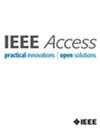5G New Radio for Non-Terrestrial Networks: Analysis and Comparison of HARQ and RLC ARQ Performance Over Satellite Links
IF 3.4
3区 计算机科学
Q2 COMPUTER SCIENCE, INFORMATION SYSTEMS
引用次数: 0
Abstract
In this paper, we study the extension of 5G New Radio (NR) to Non-Terrestrial Networks (NTN). For terrestrial ones, Hybrid Automatic Repeat reQuest (HARQ) is the main retransmission solution used by 5G NR at the physical and MAC layers, enhancing decoding performance through diversity and coding gain. However, for NTN, its implementation faces challenges due to the significant delays caused by the long distances of satellites. In the first part, we begin by investigating the minimum number of HARQ processes required for various LEO scenarios, as well as the relationship between the number of processes and the coherence time of the satellite link. Next, while the performance of 5G retransmission schemes over AWGN and terrestrial channels is well explored, this is not the case for realistic satellite channel models. To address this, we have developed an open-source simulator that accurately implements all the blocks of the data channel transmission and reception chain, including the retransmission schemes and the Land Mobile Satellite (LMS) channel. We consider the 5G NR Physical Downlink Shared Channel (PDSCH) and we present and discuss a number of results over the LMS channel, which are important to understand the HARQ performance for the NTN satellite scenario. In the second part, we consider the 5G NR alternative retransmission solution, RLC ARQ, which is available at the Radio Link Control (RLC) layer. This method might be interesting for satellite links, because it adds minimal complexity to the receiver side, but it provides less enhancement to signal reception capabilities and more latency. We first present an analytic model to compute its performance over the LMS channel, then we analyze its behavior. Finally, we provide a detailed comparison and discussion of HARQ and RLC ARQ performance in terms of block error rate, spectral efficiency, and latency. This extensive analysis provides valuable insights for researchers and space agencies interested in applying 5G NR to satellite-based Non-Terrestrial Networks.用于非地面网络的5G新无线电:卫星链路上HARQ和RLC ARQ性能的分析与比较
本文研究了5G新无线电(NR)向非地面网络(NTN)的扩展。对于地面通信,混合自动重复请求(HARQ)是5G NR在物理层和MAC层使用的主要重传解决方案,通过分集和编码增益提高解码性能。然而,对于NTN来说,由于卫星距离遥远造成的严重延误,其实施面临挑战。在第一部分中,我们首先研究了各种LEO场景所需的HARQ进程的最小数量,以及进程数量与卫星链路相干时间之间的关系。接下来,虽然对AWGN和地面信道上的5G重传方案的性能进行了很好的探索,但对于现实的卫星信道模型来说,情况并非如此。为了解决这个问题,我们开发了一个开源模拟器,准确地实现了数据信道传输和接收链的所有块,包括重传方案和陆地移动卫星(LMS)信道。我们考虑了5G NR物理下行链路共享信道(PDSCH),并提出并讨论了LMS信道上的一些结果,这些结果对于理解NTN卫星场景的HARQ性能非常重要。在第二部分中,我们将考虑5G NR替代重传解决方案RLC ARQ,该解决方案可在无线电链路控制(RLC)层使用。这种方法对于卫星链路来说可能很有趣,因为它给接收端增加了最小的复杂性,但它对信号接收能力的增强较少,并且延迟更长。我们首先提出了一个分析模型来计算它在LMS信道上的性能,然后我们分析了它的行为。最后,我们在分组错误率、频谱效率和延迟方面对HARQ和RLC ARQ性能进行了详细的比较和讨论。这一广泛的分析为有兴趣将5G NR应用于基于卫星的非地面网络的研究人员和空间机构提供了有价值的见解。
本文章由计算机程序翻译,如有差异,请以英文原文为准。
求助全文
约1分钟内获得全文
求助全文
来源期刊

IEEE Access
COMPUTER SCIENCE, INFORMATION SYSTEMSENGIN-ENGINEERING, ELECTRICAL & ELECTRONIC
CiteScore
9.80
自引率
7.70%
发文量
6673
审稿时长
6 weeks
期刊介绍:
IEEE Access® is a multidisciplinary, open access (OA), applications-oriented, all-electronic archival journal that continuously presents the results of original research or development across all of IEEE''s fields of interest.
IEEE Access will publish articles that are of high interest to readers, original, technically correct, and clearly presented. Supported by author publication charges (APC), its hallmarks are a rapid peer review and publication process with open access to all readers. Unlike IEEE''s traditional Transactions or Journals, reviews are "binary", in that reviewers will either Accept or Reject an article in the form it is submitted in order to achieve rapid turnaround. Especially encouraged are submissions on:
Multidisciplinary topics, or applications-oriented articles and negative results that do not fit within the scope of IEEE''s traditional journals.
Practical articles discussing new experiments or measurement techniques, interesting solutions to engineering.
Development of new or improved fabrication or manufacturing techniques.
Reviews or survey articles of new or evolving fields oriented to assist others in understanding the new area.
 求助内容:
求助内容: 应助结果提醒方式:
应助结果提醒方式:


